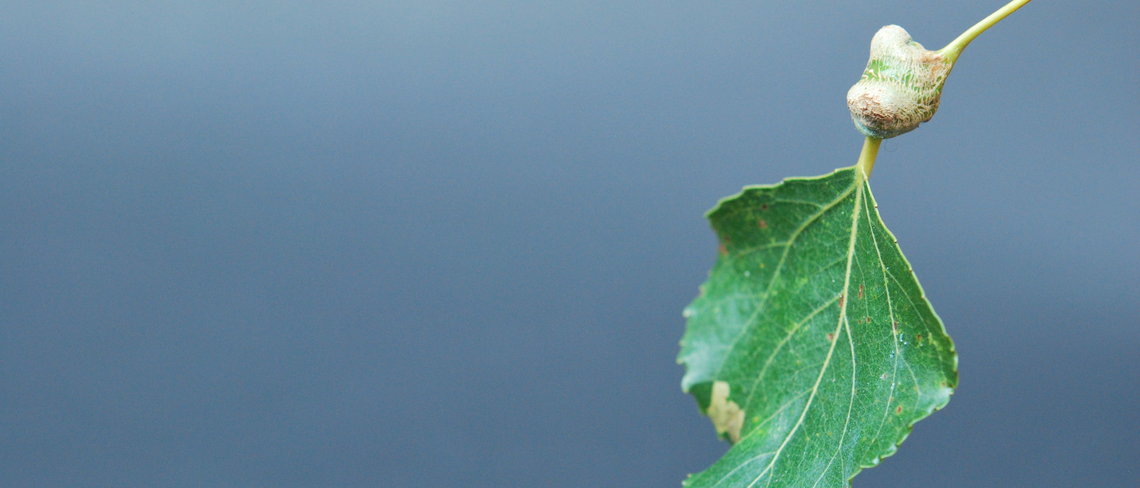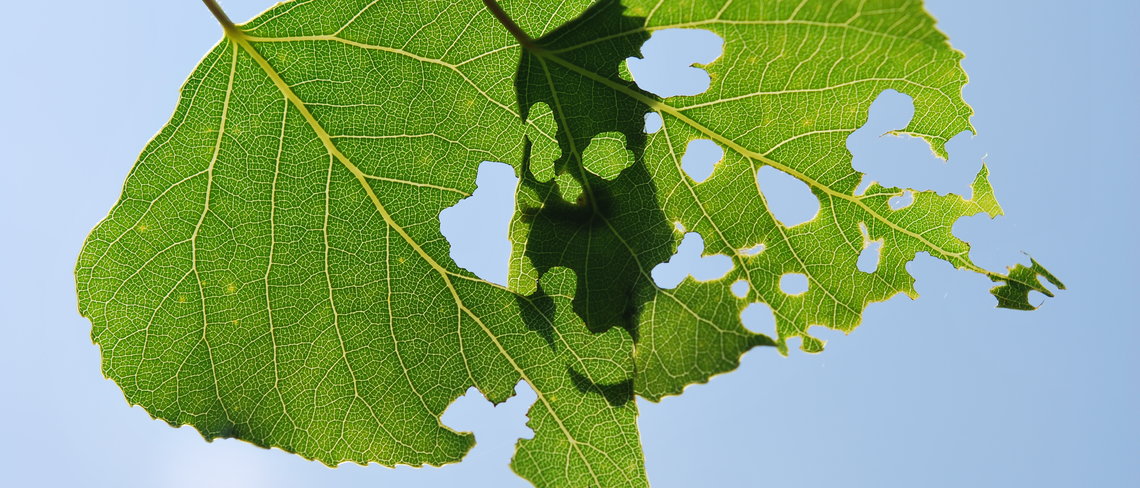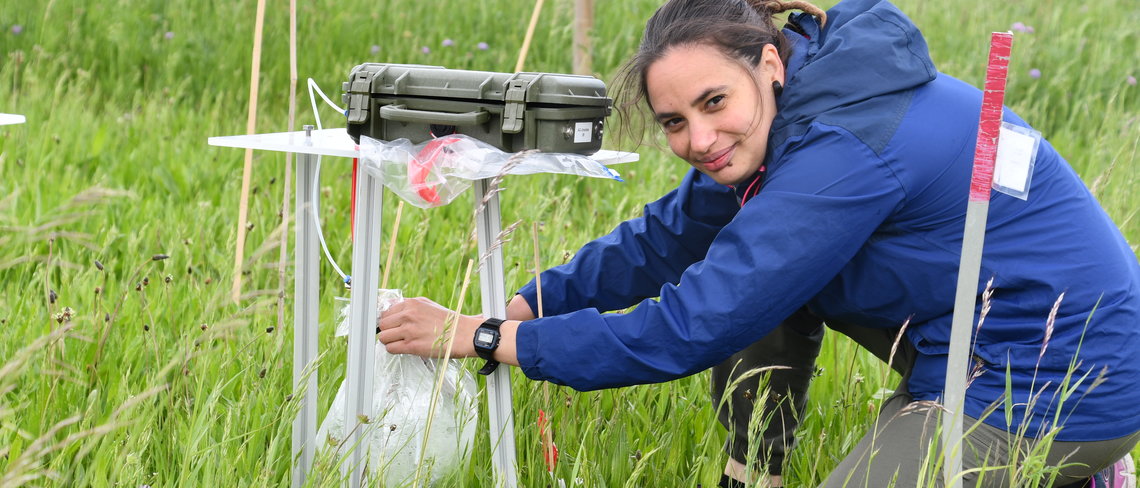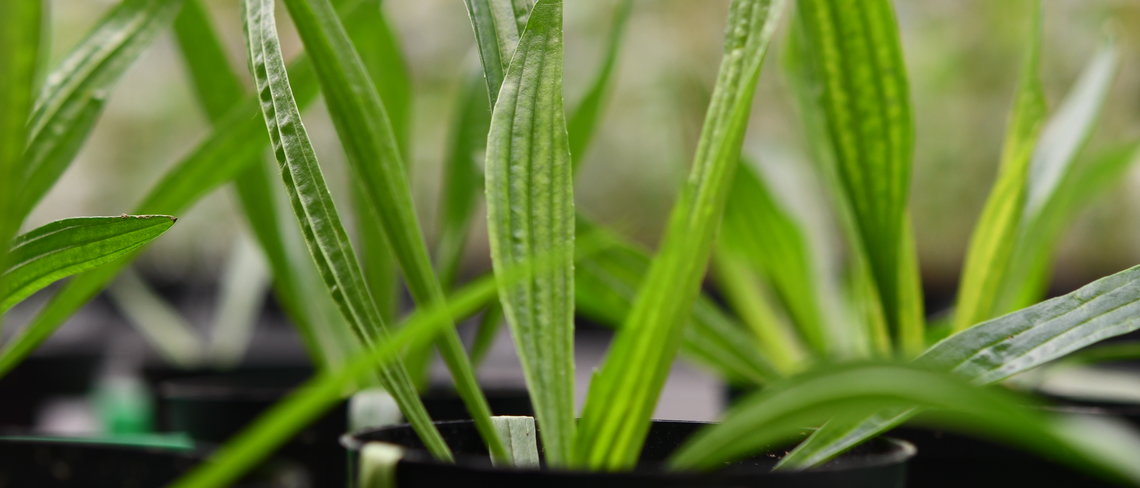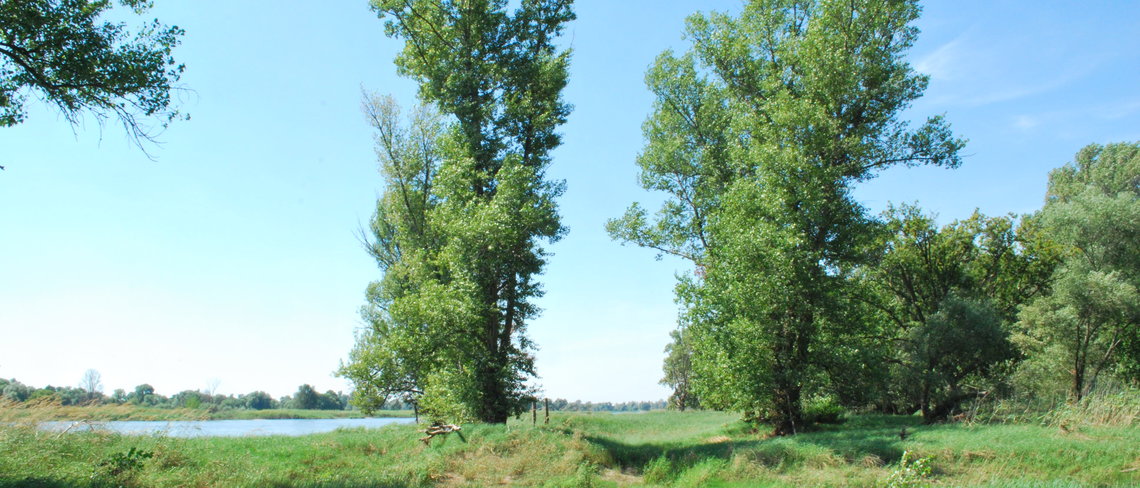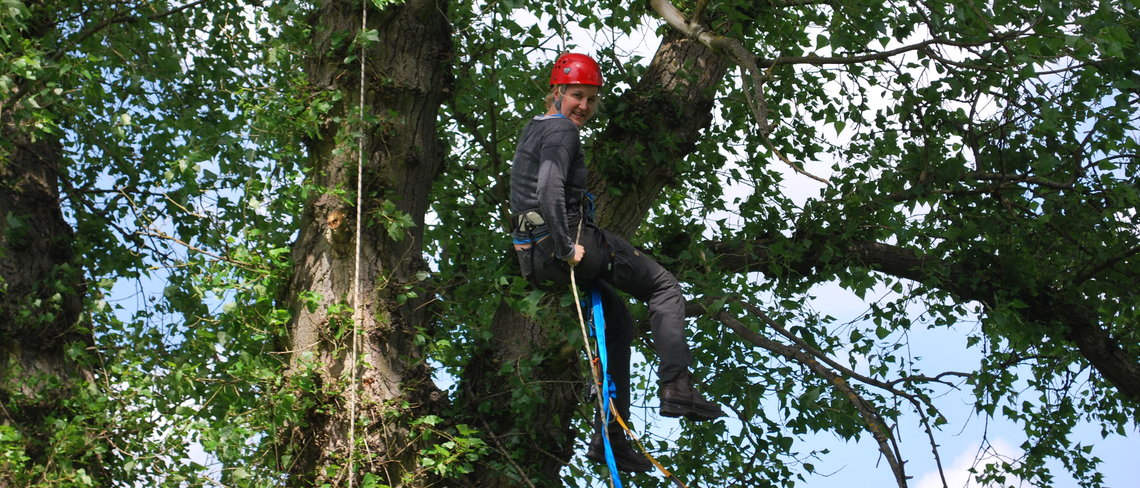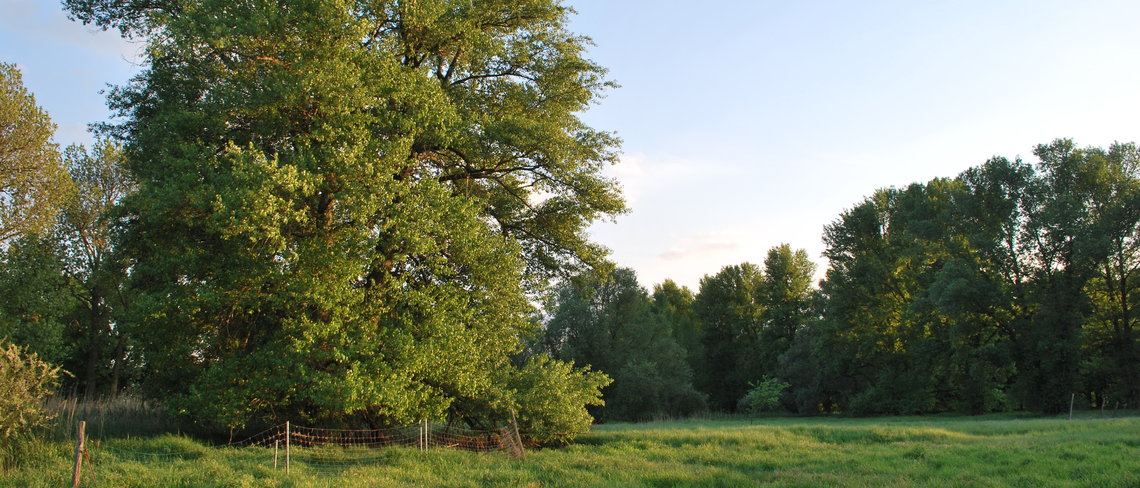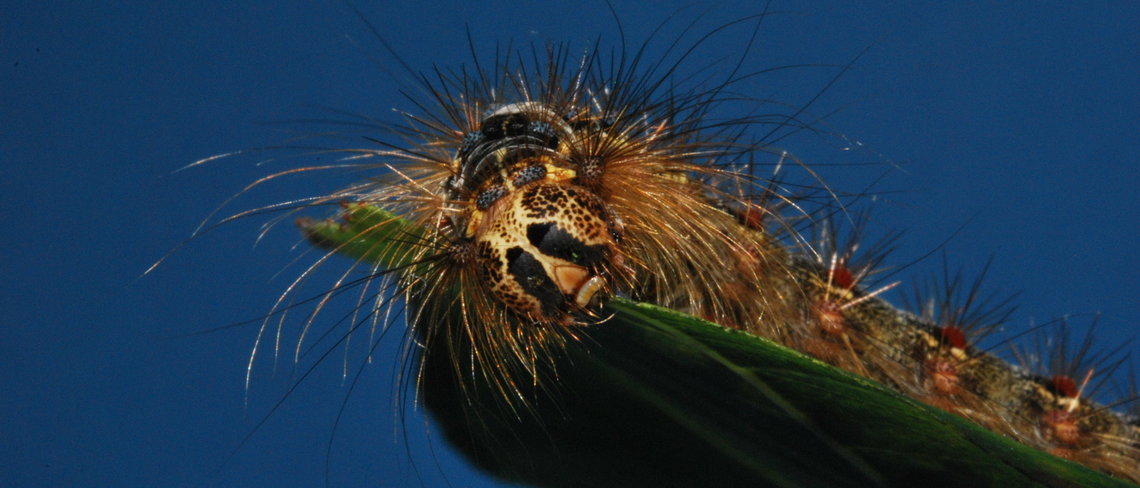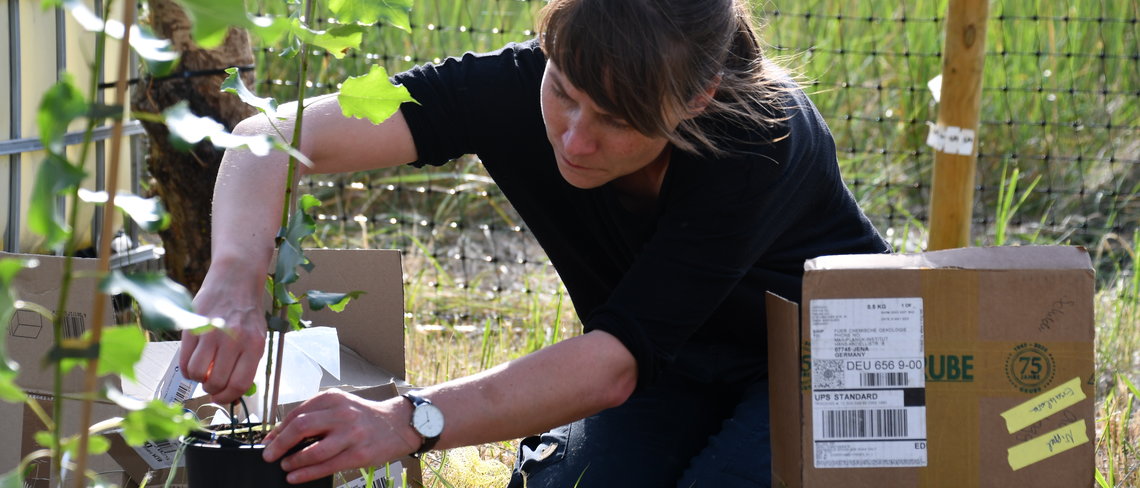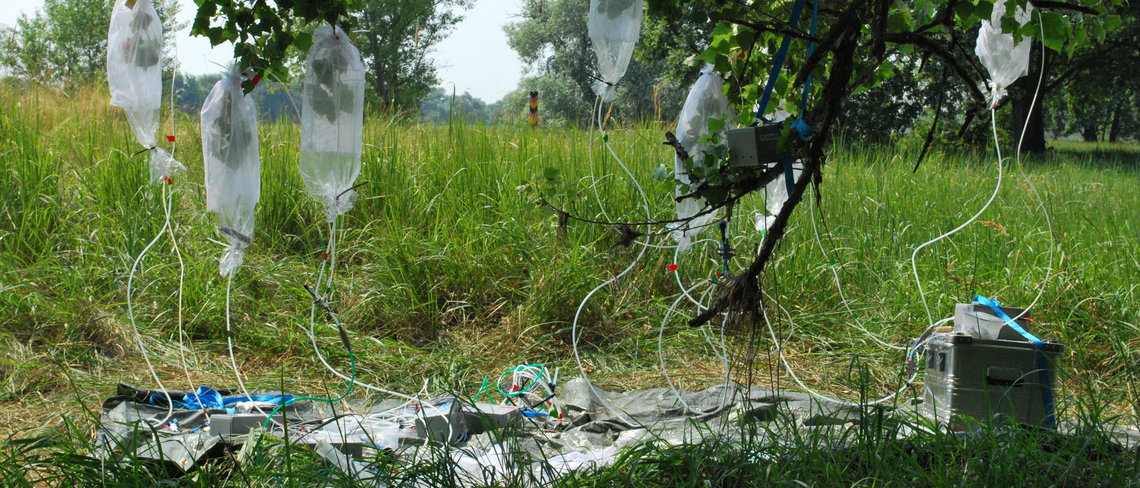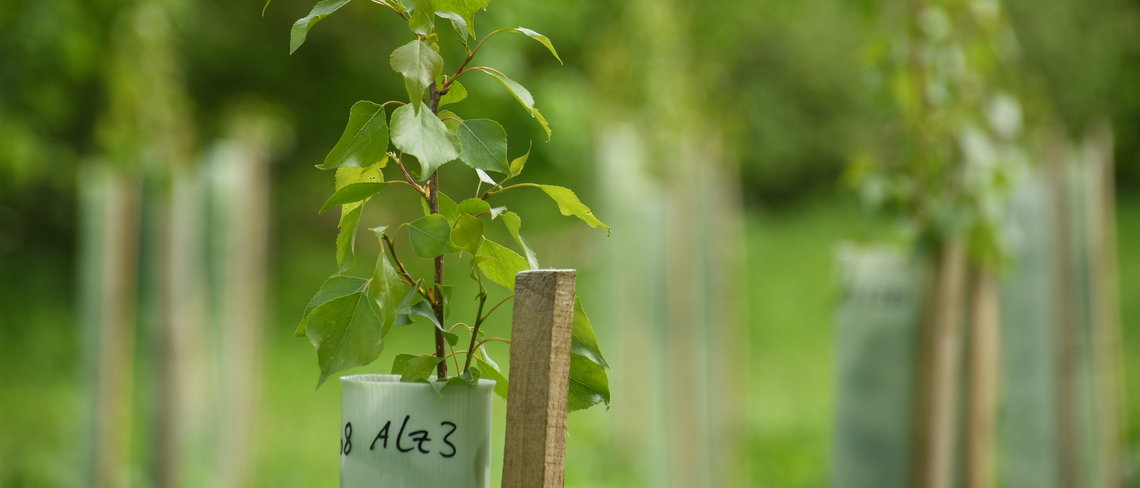Plant - Environment Interactions
We are investigating the direct and indirect defenses of black poplar against insect herbivore attack using both old growth-trees growing under natural conditions and transplants of these trees, raised in a greenhouse. Our approach is interdisciplinary, combining classical ecological methods with analytical chemistry and molecular biology.
Priming of herbivore-induced chemical defenses in Populus nigra
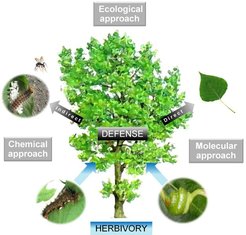
Plants that suffer herbivory may not induce anti-herbivore defenses immediately, but instead be primed to increase their induction of defenses after a second bout of feeding. Such priming of defense induction has been described for a number of herbaceous species (e.g. maize, tobacco, lima bean and poplar), but most of these experiments were performed under laboratory conditions. The goal of our project is to determine if priming of anti-herbivore defense induction occurs in nature using a natural population of old growth Populus nigra L. (black poplar). This species is a close relative of Populus trichocarpa, allowing the genomic resources of this model woody plant taxon to be applied. We want to look for priming of defense induction in natural populations of P. nigra, discover what anti-herbivore defenses are induced and examine some of the internal and external signals mediating this phenomenon.
Volatile-mediated communication in black poplar trees
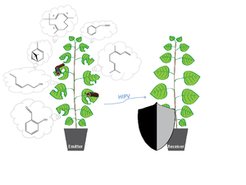
Upon insect herbivore attack, plants release a specific blend of volatile organic compounds which are known to play an important role in direct and indirect plant defense. Recent studies with mainly herbaceous plant species have shown that herbivore-induced plant volatiles can prime non-infested tissues to show a faster and stronger defense response upon subsequent herbivore attack. Evidence for defense priming in long-lived woody plant species, however, and the consequences for insect herbivore behavior and performance are still scarce. The aim of my studies is to investigate the effects of the volatile mediated priming phenomenon on the defense chemistry of the tree species, Populus nigra (black poplar) and consequences for its natural herbivores, such as gypsy moth caterpillars (Lymantria dispar). To achieve this I will combine classic ecological techniques like food choice and larval performance assays, with biochemical methods like monitoring of volatile organic compounds (VOCs) with GC-MS/FID and other plant defenses (phenolics, defense proteins) and defense hormones via LC-MS and enzyme assays.
Pathogen-mediated changes in black poplar defense against insect herbivores
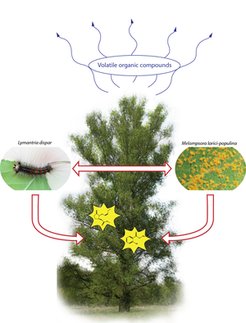
In their natural environment plants are constantly exposed to antagonists such as herbivorous insects or bacterial and fungal pathogens. When a plant is attacked by either of these organisms, a complex signaling network is triggered, including ion fluxes, phytohormone and gene expression changes. This regulatory network finally results in metabolic changes to defend the plant against the attacker. Most of the studies investigating these plant defense reactions have been conducted with only one pest organism and its host. However, these single-species interactions are very simplified and often unrealistic since under natural conditions plants face a plethora of simultaneously occurring antagonists. Furthermore, almost all of these investigations have been carried out with herbaceous species such as tobacco, lima bean or maize. But how do woody plants react to an infection by a fungus or the feeding of an insect? Is the signaling, e.g. phytohormone levels, analogous to those in herbs? What happens if a plant is attacked by two pests simultaneously? Has such a multiple attack an effect on the attacking species themselves or their natural enemies? To answer these and related questions is the aim of my study. In order to do this, I use black poplar trees (Populus nigra) and different herbivorous insect species. Additionally to those leaf-feeding antagonists, I infect the trees with the biotrophic fungus Melampsora larici-populina, a wide-spread pest in natural poplar populations and plantations. By applying both pests subsequently as well as simultaneously I try to unveil possible effects of the pathogen on the development and host-interaction of the insects, and vice versa. By measuring phytohormones, photosynthesis rate, gene expression and volatile emission of the plants I further want to examine the signaling and defense reactions in the poplar tree. Additionally, I want to investigate the ecological consequences by monitoring the fitness and behavior of the feeding insects and their natural enemies as well as the development of the fungal pathogen.
Behavioral and nutritional ecology of insects in poplar
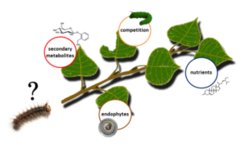
The Fitness of herbivore insects, i.e. growth rates, weight and fecundity, is greatly affected by plant nutritional quality. In natural environments herbivorous insects encounter spatial and temporal variation in host plant quality. Even within a single tree crown substantial variation in nutritional quality of the foliage exist. Herbivorous insects are not only confronted with varying nutrients in their food plants but also a plethora of repellent or toxic plant defense compounds. Furthermore, plant microorganisms, inter- and intraspecific competition and predation can also directly and indirectly influence feeding decisions of herbivorous insects. So far, most studies on selective feeding in insects were performed with grass- or herb-feeding species. Foraging strategies of arboricolous species are less well explored. The aim of my PhD project is to investigate the behavioral and nutritional ecology of selected insect herbivore species that naturally occur in black poplar (Populus nigra L.) trees. I will perform experiments with artificial diet and black poplar foliage to disentangle the single and combined effects of nutrients and allelochemicals for the preference and performance of chewing insect herbivore species such as gypsy moth (Lymantria dispar). To understand the impact of competitors, predators and endophytic fungi on the feeding preference of a single insect herbivore, I will monitor related chances in plant chemistry via analytical and molecular techniques as well as physiological consequences for the insect.
Plant volatile organic compounds in the context of biodiversity-ecosystem functioning relationships
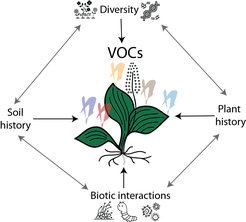
Although there is widespread consensus that biodiversity is very important for the functioning of ecosystems, the underlying ecological and evolutionary mechanisms are not well understood. In particular, there is a lack of in-depth knowledge about the role of plant volatile organic compounds (VOC) in these biodiversity-ecosystem functioning relationships. VOCs are key components of biotic interactions that underpin essential ecosystem functions, such as plant productivity, herbivory, and predation. To date, the role of plant volatiles has mostly been studied in single-species interactions under controlled laboratory or greenhouse conditions and few studies have investigated VOC emissions in complex natural plant communities. As part of the DFG--funded Jena Experiment Research Unit (http://jenaexperiment.uni-jena.de), the aim of my PhD project is to investigate how plant diversity, soil history and plant history affect the emission of volatile organic compounds from selected plant species and experimental plant communities. In collaboration with other PhD candidates of this Research Unit, I will investigate whether variation in VOC emission is also due to changes in the microbiome (in seeds and soil), herbivore damage and/or plant genetic diversity. I will perform field experiments in combination with experiments under controlled conditions, where I will collect constitutive and antagonist-induced VOCs of selected plants species growing at different diversity levels.
Intraspecific chemodiversity in black poplar and its impact on herbivorous insects and associated microorganisms
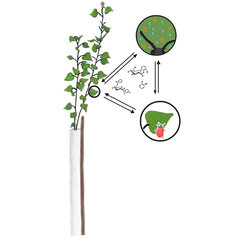
In the course of their lives, trees are attacked by numerous insects as well as pathogenic fungi and bacteria. This attack is spatially and temporally very heterogeneous, which poses a great challenge for the trees. However, trees are not helpless against their enemies. They have developed efficient physical defenses like spines, thorns and tough, lignified organs, and they can furthermore produce an immense diversity of chemical defenses. Chemical diversity or chemodiversity in trees and its importance for the interaction with the environment is so far only poorly studied and this lack of knowledge motivates my research project. In poplar trees, chemodiversity is mainly determined by genotype and biotic and abiotic environmental conditions. The aim of my PhD project is to investigate chemodiversity in black poplar (Populus nigra) and, furthermore, to explore the consequences of chemodiversity for the abundance and fitness of herbivorous insects and associate microorganism. My project, which is part of the DFG-funded research group (FOR 3000) "Ecology and Evolution of Intraspecific Plant Chemodiversity", combines classical ecological, chemical-analytical and biochemical methods.
